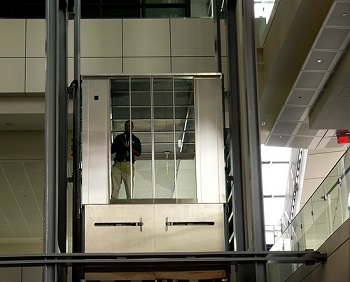The history of elevators dates back to 1889 when the first five hydraulic elevators went into operation. A decade later, the initial technology was improved and modernized by one Gustave Eiffel of France for the Universal Exposition of 1900. Around this time, major improvements happened that gave birth to what people today refer to as modern elevators.

The first major elevator that was considered effective and fit for use in large story buildings was invented in 1983. It was nicknamed Edoux and served between the second and third floor. With jacks that measured 80 meters long, Edoux was at the time a one of a kind innovation. It didn’t last long though as it was dismounted the same year for improvements. But is that all there is into the history of elevators? The answer is a big no! Read on to learn more.
Middle ages
Hoists and rudimentary elevators were common around this time. This was 3rd Century BC when manpower and animal power were mostly used to accomplish hard tasks. Water driven mechanisms then became popular about half a decade later. The elevator as people know it today was invented around this time as already hinted. It relied mostly on hydraulic and steam plungers to lift heavy loads. The elevator car was fixed into a hollow plunger which was lowered into a large underground cylinder. Water was then pumped into the cylinder to create pressure which would then lift the car.
Late middle ages
By 1857, innovation was already a big factor as far as elevators were concerned. Stronger and more reliable valves designed to govern water flow to create enough pressure to lift the car were invented. Use the valves didn’t last long though as lever controls came into the limelight. Pilot valves were then used to control car speed.
The biggest invention of the time came in the 19th century when an elevator using a rope that ran through a pulley was invented. The concept was simple back then as it is now. A rope ran through a pulley and a counterweight was placed on the other side along a shaft wall. With the invention, a new chapter that would transform elevators for centuries was opened.
Mid-19th century
The advent of electricity in the mid-19th century came along with improved elevators. The electric motor was by then popular. It wasn’t long before it was integrated into the elevator technology. The first elevator of its kind that used the motor was unveiled in New York. It featured a motor mounted at the bottom of the car. The designed used a complex gear system which was designed to climb through shaft walls that were fitted with racks.
In 1887 there was a significant improvement with an electric elevator that could use a revolving drum coming into the limelight. The elevator was first used in Baltimore where it was developed. It used a heavy revolving drum to wind a rope that would hoist the car. There was only one setback with this invention though – large drums could not be used to hoist elevators on skyscrapers. This meant that the elevators could only be used in sizeable buildings. A quick solution came a year later when the direct connected geared electric elevator was invented. This gave birth to more advanced gearless traction elevators.
Present day
It is hard to enter into a building today that doesn’t have an elevator. That is in fact why there are so many elevator and escalator consultants. The demand for elevators is simply there. It gets better with the fact that new elevator innovations come up almost every year. One can only conclude that when it comes to elevators, the future is definitely going up!